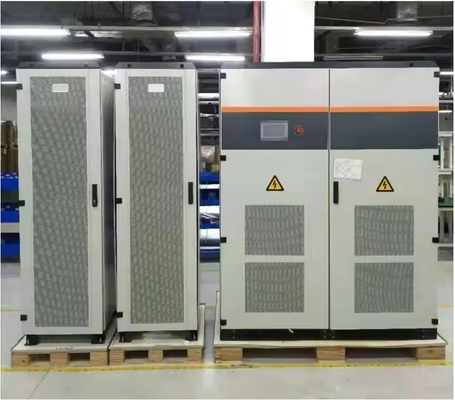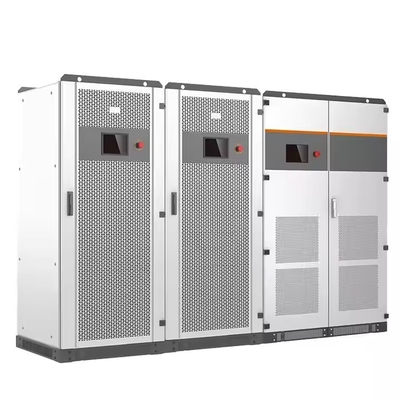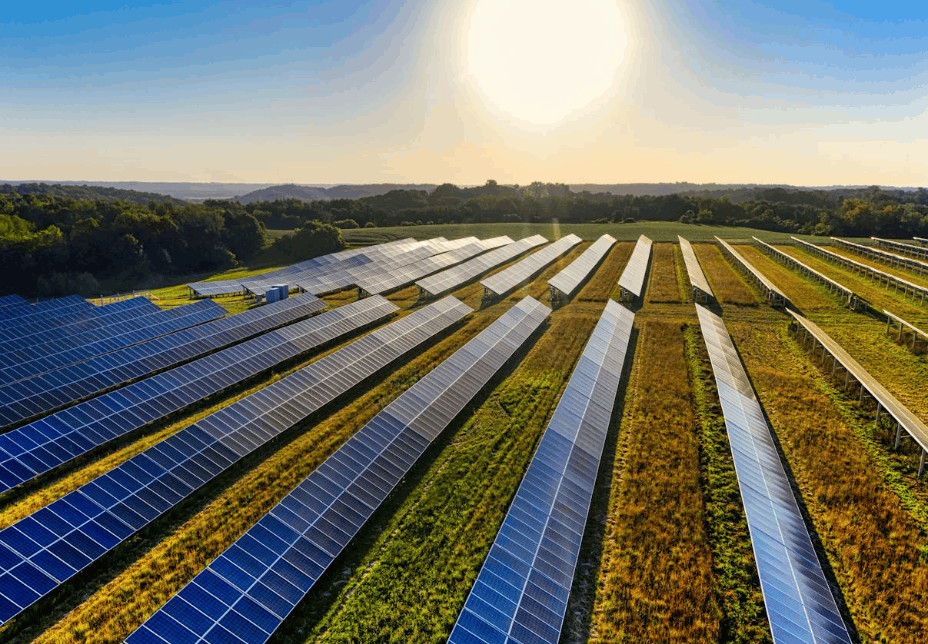500kW Microgrid Hybrid Inverter: High-Capacity, All-in-One Energy Solution
The 500kW Microgrid Hybrid Inverter is a powerful and versatile energy system designed for large-scale off-grid and hybrid applications. Combining solar PV input, battery storage, and grid connectivity, this inverter delivers reliable, high-efficiency power for industrial, commercial, and remote installations. With advanced MPPT technology, flexible parallel operation, and robust construction, it ensures seamless energy management even in harsh environments.
Key Features & Benefits
1. High Power Output & Scalability
-
Rated Power: 500kW (550kW max) for heavy-duty energy demands.
-
Parallel Operation: Supports multi-unit connection for expanded capacity.
-
100% Load Unbalance: Handles uneven phase loads without performance loss.
2. Advanced Solar Integration
-
Max PV Input: Up to 720kW with 10-12 MPPT trackers for optimal efficiency.
-
Wide Voltage Range: 250V–850V MPPT range, compatible with high-voltage PV arrays.
-
Smart Configuration: Adjusts to boost/buck modes for optimal PV-battery matching.
3. Battery & Grid Flexibility
-
Battery Compatibility: Works with 500V–850V battery systems for versatile storage options.
-
Dual-Mode Operation: Seamless switching between on-grid and off-grid modes.
-
Grid Support: 400V three-phase output with adjustable power factor.
4. Rugged & Reliable Design
-
Wide Temperature Range: Operates in -30°C to 55°C environments.
-
High Protection Rating: IP20 enclosure for dust and moisture resistance.
-
Low Noise: <70 dB for minimal disturbance in sensitive areas.
5. Smart Monitoring & Control
-
Touch-Screen LCD: User-friendly interface for real-time monitoring.
-
Remote Communication: RS485, CAN, and TCP/IP for BMS/EMS integration.
-
DG Optimization: Reduces fuel consumption with intelligent generator control.
Technical Specifications
| Category |
Specifications |
| AC Output (On-Grid) |
|
| Max. Power |
550 kW |
| Rated Power |
500 kW |
| Voltage |
400V (3-phase) |
| Frequency |
50/60 Hz (±5 Hz adjustable) |
| THDi |
<3% |
| Power Factor |
Adjustable (0.8 leading/lagging) |
| AC Output (Off-Grid) |
|
| Max. Power |
550 kW |
| THDu |
<1% (linear), <5% (nonlinear) |
| Overload Capacity |
110% continuous, 120% for 1 min |
| PV Input |
|
| Max. Voltage |
1,000V |
| Max. Power |
600/660/720 kW |
| MPPT Trackers |
10/11/12 |
| MPPT Range |
250V–850V |
| Battery Compatibility |
|
| Voltage Range |
500V–850V |
| Max. Charge Power |
600/660/720 kW |
| Physical & Environmental |
|
| Dimensions |
(600×720×2,050 mm) ×2 + (1,600×1,050×2,050 mm) |
| Weight |
3,265–3,325 kg |
| Operating Temp. |
-30°C to 55°C |
| Protection Rating |
IP20 |
| Cooling |
Air-cooled |
| Communication |
RS485, CAN, TCP/IP |
How It Works
This hybrid inverter intelligently manages solar power, battery storage, and grid/generator input to ensure uninterrupted electricity. Its MPPT technology maximizes solar harvest, while the bidirectional converter efficiently charges/discharges batteries. In off-grid mode, it stabilizes voltage and frequency, and in on-grid mode, it supports feed-in or backup power.
Ideal Applications
✔ Industrial Sites – Mines, factories, and large facilities needing reliable off-grid power.
✔ Remote Communities – Villages and islands without stable grid access.
✔ Agricultural & Farming – Irrigation systems, livestock operations, and processing plants.
✔ Commercial Microgrids – Hotels, resorts, and data centers requiring energy independence.
✔ Emergency Backup – Hospitals, telecom towers, and critical infrastructure.
Why Choose This Inverter?
✅ High Efficiency – Optimizes solar and battery usage for cost savings.
✅ Modular Expansion – Add more units as energy demand grows.
✅ Fuel Savings – Smart generator control reduces diesel consumption.
✅ Durability – Built for extreme climates and long-term reliability.
✅ Easy Maintenance – Integrated bypass and user-friendly diagnostics.
FAQ
Q: What solar panel configurations are supported?
A: Compatible with high-voltage strings (250V–850V), supporting up to 720kW PV input.
Q: Can it work without a battery?
A: Yes, it can operate in grid-tied or PV-direct mode, but a battery is recommended for backup.
Q: Is remote monitoring possible?
A: Yes, via RS485, CAN, or TCP/IP for integration with energy management systems.
Q: What certifications does it have?
A: Complies with IEC, EN, and regional standards for safety and grid compatibility.
Installation & Safety Notes
⚠ Professional installation required – Due to high voltage and complexity, only certified technicians should handle setup.
⚠ Follow PV/battery voltage guidelines – Ensure compatibility to avoid damage.
⚠ Adequate ventilation needed – Air cooling requires proper airflow for optimal performance.

 Your message must be between 20-3,000 characters!
Your message must be between 20-3,000 characters! Please check your E-mail!
Please check your E-mail!  Your message must be between 20-3,000 characters!
Your message must be between 20-3,000 characters! Please check your E-mail!
Please check your E-mail! 










